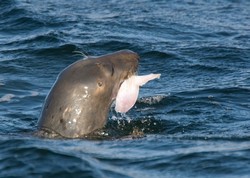Effect of noise on wildlife
A vast array of animals uses sound to communicate, navigate, locate food and identify threats. However, their ability is at risk from sound pollution. This problem is particularly acute in marine ecosystems which are threatened by human activities such as shipping and oil exploration. Unfortunately, field studies into this phenomenon have lacked the technology to record data for long periods due to battery and memory constraints and short recording duration. The ANIMALSOUNDSENSORS(opens in new window) (On-animal sound sensors: long-term sound and movement recording tags for studying how environmental noise affects animals) project solved this challenge by developing an advanced tag that can record sound and animal motion over extended periods of time. Scientists created a prototype tag for each type of animal. They improved the recording duration as well as the sensor capabilities to detect the animal's physical state as well as its habitat. The tags were first tested on captive seals and whales and then improved for use on wild animals. Miniature tags were also developed for birds and small land animals. In addition, scientists captured echolocation behaviours (locating objects by using reflected sounds) to gain a better understanding of the predator-prey dynamics of marine mammals. These findings give greater insight into the effects of noise on animal hunting and foraging behaviour. ANIMALSOUNDSENSORS will benefit society by identifying how human activities can adversely affect animals and so have implications on biodiversity conservation and ecosystem health. Potential end-users include policymakers and regulators who will benefit from knowing the relative contribution of activities to the cumulative exposure of animals enabling evidence-based and appropriate management of the environment. One example taken from the project was sound tag studies on Brydes whales in New Zealand. This led to a protocol of voluntary speed restrictions for ship traffic in and out of a major harbour in order to reduce mortality of these large whales from collisions. The technology has also been adapted for use in robotic ocean gliders creating a cost-effective capability for site monitoring, habitat quality assessment, and animal abundance surveys. These sensors may be especially relevant for fulfilling monitoring obligations under the Marine Strategy Framework Directive.







